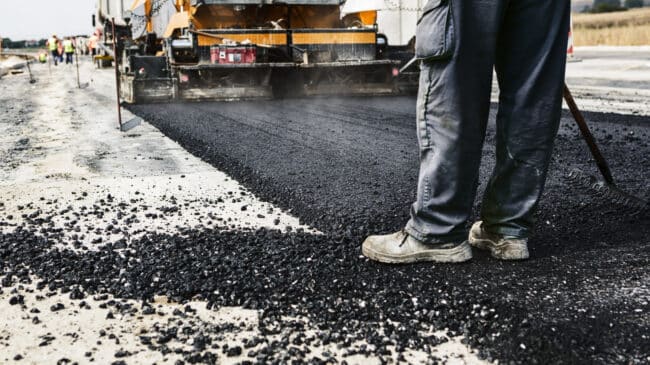There is growing awareness that building needed U.S. infrastructure is plagued by long delays, cost overruns, and an increased risk that projects will be canceled rather than implemented. Concerns about this problem have increased significantly as U.S. policy moves toward dramatic increases in the supply of “green” electricity, requiring massive investments in energy generation, long-distance transmission lines, mining and processing of needed minerals, etc. This country also faces the need to rebuild and modernize its aging Interstate Highway System and to add facilities for new forms of air and surface transportation.
Since 2020, a growing number of opinion leaders have published critiques of what is increasingly seen as a dysfunctional environmental review process, with a new focus on environmental litigation—the last stage of federally required review of the environmental impacts of proposed infrastructure, including major projects in energy and transportation. These critiques focus on what is being seen as excessive use of what has been termed “citizen voice” to prevent projects from gaining needed federal approvals. While some of the critiques come from conservatives, a growing number arise from centrists and liberals, in major national media including, The New York Times and The Atlantic.
As Matthew Yglesias has written, “Delay is a policy choice—one governments at various levels have opted for over the past half century, regularly prioritizing community input and litigation avoidance over the goal of getting something done quickly.”
In 2023, a new study from researchers at Stanford University sought to identify the impact of environmental litigation using a dataset (from the White House Council on Environmental Quality, a.k.a. CEQ) of environmental impact statements from 171 large energy projects and 184 large transportation projects. Some categories of projects of each kind faced average litigation rates of 50% or more, with permit process duration averaging as much as seven years for energy projects and as much as 9.6 years for transportation projects. Their assessment concluded that environmental litigation prioritizes local concerns over broader regional and national concerns and, even more important, that it provides no mechanism by which such a balancing could even be attempted.
U.S. environmental assessment appears to be an outlier compared with many peer nations in Europe, Australia and New Zealand. Data from a study of environmental reform in such countries showed very few examples of U.S.-type litigation delays, with the exception of the United Kingdom, whose common-law system is similar to ours.
In 2023, Germany enacted sweeping reforms of litigation related to major infrastructure. Many peer governments impose time limits for their environmental review process, and some provide a streamlined process for projects with national significance.
Two major studies of the cost of rail transit projects in other countries were released in 2023. The Eno Center for Transportation found that the average construction cost premium for U.S. rail transit projects is 48% for at-grade rail transit projects and 57% for tunneled projects.
The Marron Institute at New York University, using a database of 900 transit projects in 59 countries, found striking differences, identifying relatively low cost per kilometer in Greece, Italy, Portugal, South Korea, Spain, and Switzerland. The 10 most- costly countries, in addition to the United States, included Hong Kong, Netherlands, New Zealand, Singapore, and the U.K. While the study did not focus on environmental litigation, its case study of Italy revealed a dramatically different approach to such reviews, with the first stage addressing environmental (ecological) impacts, and with public objections addressed by specialized administrative tribunals at that early stage.
Congress has adopted several environmental review reforms in recent legislation. In the Infrastructure Investment and Jobs Act (IIJA) in 2021, Congress codified aspects of the One Federal Decision policy from the Trump administration, limited the alternatives analysis of Environmental Impact Statements (EISs) to 200 pages, and required the release of a Record of Decision with 90 days of the final EIS.
In the Fiscal Responsibility Act (FRA) of 2023, Congress imposed time limits and page limits for EISs and Environmental Assessments (EAs) and codified CEQ requirements that an EIS must consider “reasonably foreseeable” environmental impacts and a “reasonable range” of alternatives that are “technically and economically feasible.”
But at more or less the same time, CEQ released revised Phase 2 National Environmental Policy Act regulations that add explicit climate and environmental justice provisions, as well as prioritizing “environmentally preferable” alternatives, which critics have dubbed as providing a “NEPA shortcut” for the Biden administration’s preferred alternatives.
None of these changes addressed the problems caused by current environmental litigation practices. Consequently, this policy brief outlines an array of potential litigation reforms.
Some of these originated from centrist organizations: the Bipartisan Policy Center (BPC) and the Institute for Progress (IFP). Others come from legal analysts and university researchers, and another from an affiliate of the Federalist Society. This brief suggests an initial bipartisan reform agenda along the lines of the BPC and IFP proposals.
This policy brief’s final section assesses the political feasibility of bipartisan environmental litigation reform in Congress.
First, it cites a wide array of organizations assembled by the U.S. Chamber of Commerce in 2023—96 national organizations and state business groups in 46 states—arguing for streamlining the environmental permitting process. Signers include several major labor unions and an array of think tanks. Potential originators of such a reform proposal could be the Conservative Climate Caucus (CCC) and the bipartisan House Problem Solvers Caucus, whose members overlap somewhat with the CCC. There are no Senate counterparts to these two House organizations, but these two groups have worked with bipartisan groups of senators in 2020 and 2021.
The growing support for streamlining environmental litigation with potential sponsors in Congress suggests it should be a priority for the new Congress that will take office in January 2025.

